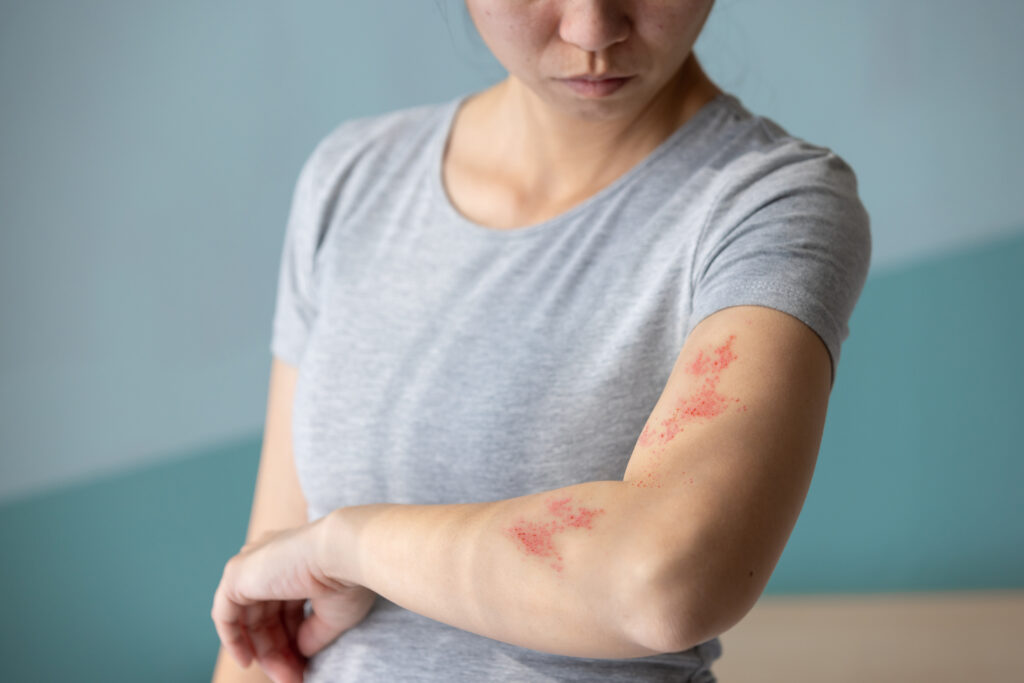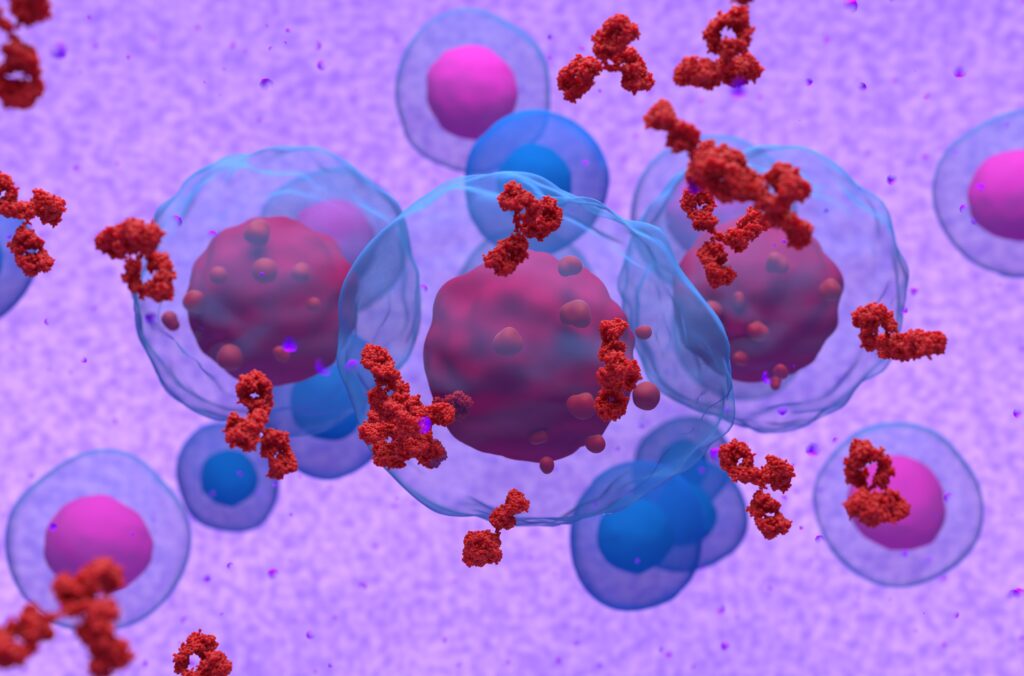
If you’ve ever had a red, itchy bump on your skin that went away as quickly as it appeared, you may have had hives. About 20% of the general population will have hives at some point. Since they disappear on their own for most people, hives usually aren’t a cause for concern. Occasionally, hives will stick around and require treatment before going away.
What Causes Hives?
Hives are a reaction to different substances or situations, known as triggers. Some of the most common triggers for hives include:
- Bug bites or stings
- Extreme exposure to cold or heat
- Food, such as eggs, legumes (such as peanuts), nuts, or shellfish
- Illness
- Latex
- Medication
- Pet dander
- Pollen
- Stress
When you have an allergic reaction to a trigger, your body releases chemicals such as histamines into your blood to get rid of the allergen. Your immune system tries its best to defend you from invaders. This causes itching, swelling, and other symptoms—anything that will help get the allergen off your skin or out of your body.
Sometimes, your body does a good job of getting rid of the allergen on its own. You may be uncomfortable for a little while, but you usually won’t need treatment. If you have a mild case of hives, you can reduce the itching and swelling by avoiding hot baths or showers and wearing loose-fitting clothing. Clothes that are too tight might irritate the affected area. Cold showers or baths can soothe the itchiness.
You can also reduce itching and swelling with an antihistamine, such as diphenhydramine (Benadryl). Antihistamines block the effects of histamines, which reduces the actions your body takes to get rid of allergens. Non-drowsy antihistamines keep you from getting sleepy after you take them.
If antihistamines don’t work, you may need to take an immunosuppressant to calm your immune system. To treat severe hives, your doctor may recommend an oral corticosteroid, such as prednisone.
Are There Different Types of Hives?
Hives can be either acute or chronic. Acute hives are short-lived and usually go away within a day, although they may stick around for up to six weeks. They usually have an identifiable trigger, such as a reaction to food or latex. These can generally be prevented by avoiding known triggers. Medications can also trigger acute hives, and they may occur at any point over the course of the medication. If you think medication is causing your hives, talk to your doctor.
Chronic hives can last longer than six weeks. For some people, they can last as long as a year, if not longer. Although some chronic hives can be caused by an allergy, it’s only a small percentage. The majority of chronic hives don’t have an identifiable trigger, making them harder to treat. If you have chronic hives, you can take the same precautions as if you had acute hives to manage the symptoms.
Although acute and chronic hives are rarely life-threatening, they can potentially cause anaphylaxis, a serious allergic reaction.
Symptoms of anaphylaxis include:
- Trouble breathing
- Nausea and vomiting
- Diarrhea
- Tightening of the throat
- Dizziness
- Cardiac arrest
- Low blood pressure
Anaphylaxis can happen very quickly, and it usually has the same triggers as hives. However, it’s not always possible to identify the cause. In either case, anaphylaxis needs to be treated immediately, usually with an epinephrine injection. Many people with allergies carry an EpiPen, which is an epinephrine auto-injector. If you or someone else is having a severe allergic reaction and an auto-injector isn’t available, call 911 immediately.
How Are Hives Diagnosed?
If you have hives, a dermatologist can usually diagnose them by looking at your skin. But they need to understand how and why you got them. Some questions a dermatologist might ask you include:
- What did you eat before the hives appeared?
- Were you bitten or stung by a bug?
- Were you wearing tight-fitting clothing?
- Were you feeling stressed?
- Were you out in extreme weather?
- Did you take any medication?
These questions can help identify the possible trigger, so it’s important to try to remember what you were doing just before the hives appeared. It’s also helpful to communicate how often you get the hives and how long they last, as well as if they occur with other symptoms.
Your dermatologist may also perform an allergy test to identify what allergen may have caused your allergy. With a skin prick test, the dermatologist will introduce the allergen into your skin to see if you have a reaction. Another allergy test is a patch test. The dermatologist will place drops of an allergen onto your skin and cover it with a bandage. When you return to the doctor’s office, usually within two to four days, they’ll remove it to see if you’ve had a reaction.
If you have chronic hives, your doctor may perform a biopsy. They’ll take a small tissue sample and send it to a lab for testing. Your doctor may also perform a blood test to see if you have high levels of antibodies, which help fight off allergens, bacteria, and other foreign invaders.
Although hives can be a nuisance, they’re generally harmless. Lifestyle modifications or medication can usually help relieve the symptoms. If your symptoms last for more than a couple of days, be sure to talk to your doctor.
Resource List
- “Hives” via American College of Allergy, Asthma & Immunology
- “Patient education: Hives (urticaria) (Beyond the Basics)” via UpToDate
- “Acute Hives versus Chronic Hives” via American Academy of Allergy, Asthma & Immunology
- “Hives: Diagnosis and Treatment” via American Academy of Dermatology Association





